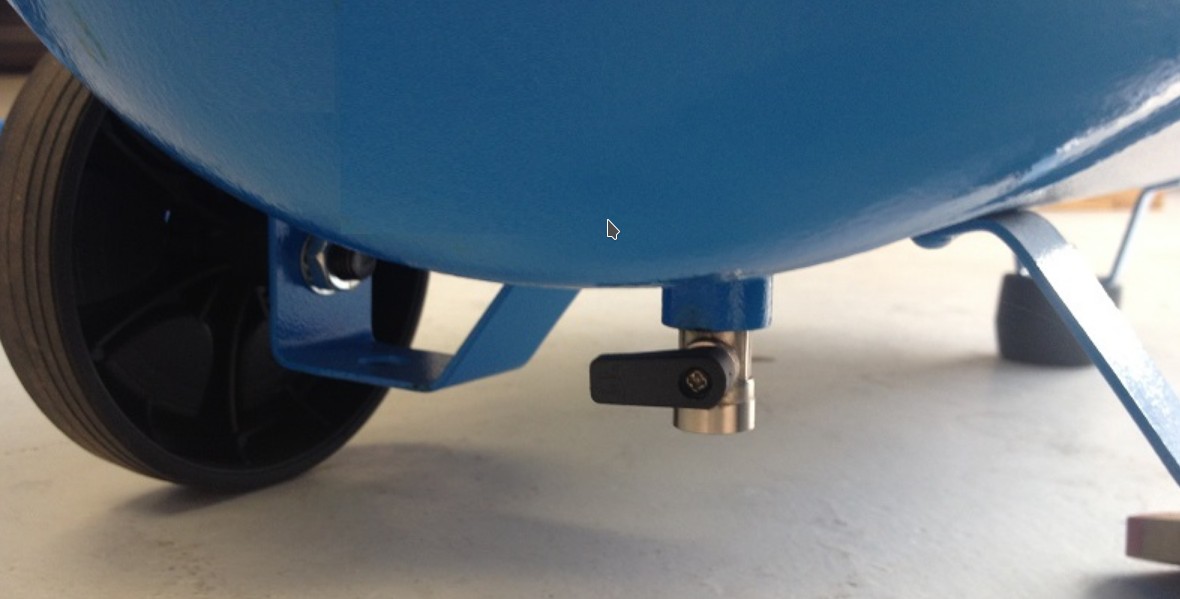How to Drain an Air Compressor
Air compressors make odd tasks around the house or workshop much easier; therefore, proper compressor maintenance helps maintain your air compressor’s efficiency and increase its lifespan. Also, it reduces the risk of explosions, fires, or injury. Other than periodic cleaning and fixing faulty valves, draining moisture from your compressor at least once a week is part of the maintenance process.
You drain an air compressor by opening the valve at the bottom of the tank to release any moisture condensed in the tank. We have more information on how to drain your compressor, why you should drain it, and the drain valve location of some standard models below.
Do I need to drain my air compressor?
Yes! It is necessary to drain your compressor after each use and, in most cases, compulsory. You can do it manually or happens automatically in some compressors. It is usually a hissing sound right after you turn off your compressor.
The draining prevents moisture build-up and ensures your valves’ lifespan, seals, and interior components by preventing corrosion. A corroded tank develops leakages, which exhausts the compressor over time reducing overall pressure and CFM output. The compromised compressor also gets drained, so the power(amperage) needed to start the compressor again does not exceed the maximum rated capacity. Water vapor can also travel out of your compressor through the airlines during use and damage any tools you use.
Even for larger compressors with an external air dryer that regulates the amount of moisture, they also require regular draining, especially when the relative humidity is high.
Therefore, you need to drain your compressor after every single use, and if you use it every day, then drain it daily after use or after a couple of days; otherwise, it will damage the compressor.
How to drain your air compressor
The draining process varies depending on the model. But in general, the draining valve is usually situated at the bottom of the compressor tank, and the draining process is similar.
Steps
- Switch off your compressor and unplug it from the power source to ensure there is no power flow.
- Reduce the internal pressure of the tank anywhere below 10 PSI. Wear eye protection to prevent debris from entering your eyes and pull the ring on the tank’s safety valve to release the pressure. Do this until the tank is empty.
- Locate the drain valve, usually at the bottom of the tank. Slowly open the valve by turning it anti-clockwise to release the moisture. Some compressors have the push-pull method.
- Tilt the tank to ensure all the moisture drains out from all corners of the tank.
- When fully drained, close the valve tightly. Running your air compressor with an open drain will overwork the compressor even when running something as light as a pin nailer and damage it.
How to drain a pancake compressor
Pancake air compressors are lightweight, making them convenient for home use. They also require very little maintenance. However, since the bottom is not entirely flat, the drain valve is located underneath but more to the side. This feature makes it difficult to drain all the moisture successfully. An easy tip is always to tilt your compressor to the drain valve side when draining to remove all the water from the tank.
How to prevent water from forming in an air compressor
It’s almost impossible to completely keep water out of your compressor since moisture naturally exists in the air. Still, there are ways you can reduce the amount of moisture that goes into your compressor.
- Air filter – Air filters prevent most of the moisture, dust, and debris from entering internal parts of the compressor using centrifugal force. If the air is not dry enough, you can use the other methods below.
- Air dryer- An air dryer will cool down the air to a much lower temperature, which condenses the air and moisture in it. This water is collected and drained out. Unfortunately, the dryer will not remove the water produced when using the compressor; therefore, manual draining is still necessary. There are two types of dryers:
- Refrigerant air dyer- This dryer works by cooling the air to about 33-40°F and the excess water condenses. This water is collected and drained out through an automatic drain valve.
- Desiccant air dryer- This dryer has a desiccant, a solid that reacts chemically to remove water molecules from the air. The most common desiccant are; silica gel, activated alumina, and the molecular sieve.
| Compressor Model | Drain Valve Location |
| Makita MAC700 Big Bore 2.0 HP Air Compressor | Underneath and slightly to the side of the air tank. |
| Dewalt DWFP55130 | Directly underneath the air tank. |
| BOSTITCH BTFP3KIT | Underneath and somewhat to the side of the air tank. |
| PORTER-CABLE C2002-WK | Underneath and slightly to the side of the air tank. |
| PORTER-CABLE CMB15 | Directly underneath the air tank. |
| California Air Tools 8010 Ultra Quiet & Oil-Free | Directly underneath the air tank. |
| Makita MAC320Q | Underneath and slightly to the side of the air tank. |
| Craftsman Air Compressor CMXECXA0200141A | Directly underneath the air tank. |
Air compressors are convenient tools; you’ll need to know how to maintain them properly, so they serve you well. Always refer to the manufacturer’s manual for drain valve location as model designs are different, but the process of manually draining your air compressor is similar. And remember to empty your compressor regularly to prevent damaging your compressor and pneumatic tools like nail guns.


